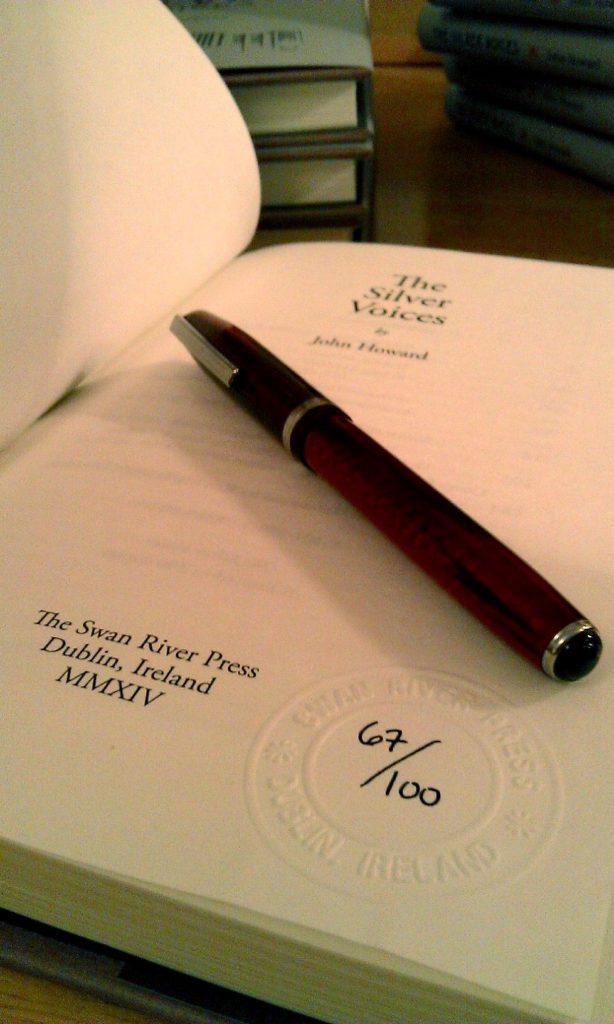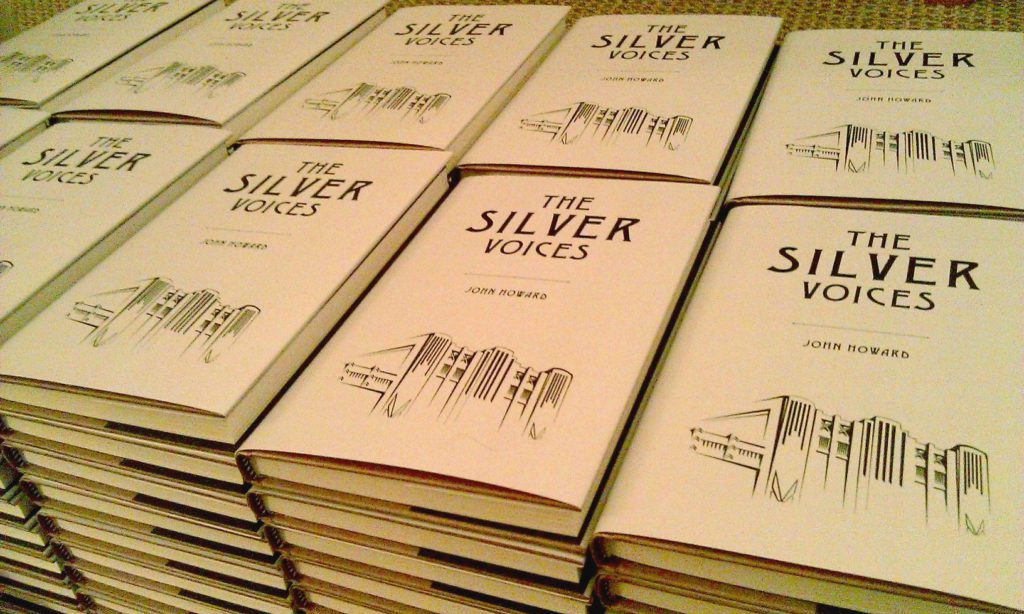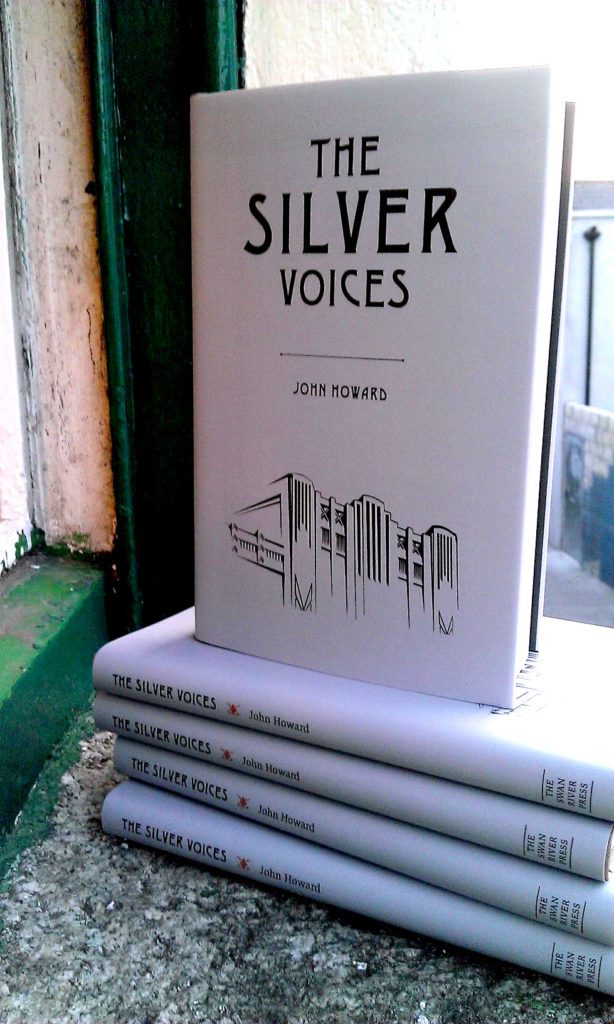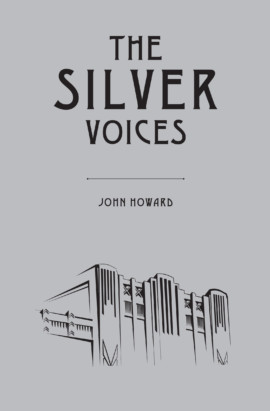The Silver Voices
John Howard
Availability: In Print – Paperback, Out of Print – Hardback
“I found the white cities just as they were in my dreams.” – Joseph Roth
Transylvania: the country beyond the forest and land of the seven fortress towns. In The Silver Voices we encounter the previously unknown eighth town: Sternbergstadt. Now known as Steaua de Munte, it’s one of those places where past and present continually meet, with no-one being entirely sure which has the upper hand. In Steaua de Munte history can never be said to be dead and buried; it plays too many tricks on the present and future for that.
Our limited edition hardback is sold out.
Please check with our Booksellers for remaining copies.
Cover art by Meggan Kehrli
ISBN: 978-1-78380-002-5 (hbk)
ISBN: 978-1-78380-763-5 (pbk)
Contents
“Artist in Residence”
“Boundaries”
“The Rise and Fall of the SSS”
“The Reluctant Visionary”
“In Strange Earth”
“The Silver Voice”
“To Hope for a Caesar”
“Acknowledgements”
John Howard
John Howard was born in London. His books include The Silver Voices, Written by Daylight, Buried Shadows, A Flowering Wound, and The Voice of the Air. With Mark Valentine has written the joint collections Secret Europe, Inner Europe, Powers and Presences, and This World and That Other. His stories have appeared in many anthologies. He has published essays on various aspects of the science fiction and horror fields, including such iconic authors as Fritz Leiber, Arthur Machen, and August Derleth. He has also written about many now lesser-known and unfairly obscure authors and their work.
Read more“The genuinely lost worlds are those that are always with us. The lost worlds of history and the people who haunt them are the subjects of John Howard’s stories in The Silver Voices . . . It’s especially apt that Swan River has reprinted this collection now, one hundred years after so many old certainties were gunned down at Sarajevo.” – Supernatural Tales
“Ambiguity does not stop with the work’s overall composition but proceeds to infect each of the stories . . . Such is the hallmark of gifted writing.” – Dead Reckonings
“Howard has carved out an almost unique niche for himself, detailing the geo-political ebb and flow of Eastern European history from the minutiae of its human costs and intrigue.” – The Pan Review
“Sad . . . with an elegiac quality commemorating all that was lost to the war, the ways in which the world changed for better and worse.” – Black Static

The Silver Voices by John Howard. Cover art and jacket design by Meggan Kehrli; edited by Brian J. Showers; copyedited by Jim Rockhill; typeset by Ken Mackenzie; published by Swan River Press.
Hardback: Published on 23 July 2014; limited to 300 copies of which 100 are embossed and hand numbered; 168 pages; lithographically printed on 80 gsm paper; dust jacketed; illustrated boards; sewn binding; head- and tail-bands; issued with one postcard; ISBN: 978-1-78380-002-5.
Paperback: Published on 31 December 2022; no limitation; print on demand paperback; 171 pages; ISBN: 978-1-78380-763-5.

 “From This Blessed Town” An Interview with John Howard
“From This Blessed Town” An Interview with John Howard
Conducted by Mat Joiner, © July 2014
Mat Joiner: All but one of the stories in The Silver Voices share a common setting: the town of Steaua de Munte (formerly Sternbergstadt), the eighth “fortress town” of Transylvania. It’s a fictional place, but obviously has its roots in real locations and events. Could you tell us a little about its genesis?
John Howard: That’s simple enough! In 2009 Mark and Jo Valentine, and me visited Romania at the invitation of Dan Ghetu of Ex Occidente Press, who had published Mark’s and my The Rite of Trebizond and Other Tales. We spent a fascinating week with Dan and his wife, who were generous and painstaking hosts. Our holiday started and ended in Bucharest, but in between we travelled through Wallachia and over the mountains to Transylvania where we visited Sibiu, Sighisoara, Brasov, and Sinaia, among many other places. I was very taken with the first two in particular – and my creating a fictional town shortly afterwards was just the natural outcome!
MJ: It strikes me that Steaua de Munte is the one recurring character in this collection. To at least two of your protagonists it’s the endpoint of their journeys. The title character of “Artist in Residence” decides on his destination simply by putting his finger on a map; Branescu of “In Strange Earth” is driven there by the fall of Ceausescu’s regime. Indeed, in the latter story, it’s described as “a good place”. Does it represent a kind of sanctuary?
JH: Yes, it can. I suppose in other circumstances a place might represent the opposite of a sanctuary, too – a prison, perhaps. So while somewhere is a ‘good place’ for one person, maybe it’s a bad place for someone else. I think of Steaua de Munte as a ‘special’ place rather than a ‘good’ one. It’s almost certainly a rather idealised town for its setting, although just because I might only suggest the ‘nicer’ aspects it doesn’t mean that it’s all like that. It hasn’t been, and isn’t. But the important thing for me is that anything could happen in that city, and to anyone.
“I could not help but think: Which world are we in? Which future? Are we on the way to utopia – or what?” – “The Reluctant Visionary”
MJ: Time itself isn’t quite fixed down in the city. For Alin in the title story, there are shades (political, at least!) of his family’s involvement with fascism. In “The Reluctant Visionary” at least one of its narrators has a “nostalgia for the future” symbolised by the Modernist movement, and in particular the film of Wells’s Things to Come. They seem to me to be haunted men. Is it possible to come to terms with our ghosts?
JH: Ghosts? What ghosts? I’m with whoever it was who made that comment along the lines of ‘I don’t believe in ghosts, but am scared of them’. No seriously, I think it depends on what you mean by ‘come to terms’. We all have our obsessions and longings and fascinations and hates and dreads, from whatever sources. I’m sure it’s possible to live with them, get along with them, make the best of things as far as is possible, even pretty much transcend them. Sometimes the ghosts are in the ascendant, sometimes ‘you’ are. These ghosts can lead to creativity, as well as to, say, resignation or stagnation, or worse. I doubt we can ever entirely escape our ghosts, desirable as that might be, because that would mean escaping from a part of our very selves. But come to terms with them, yes.
MJ: Boundaries – geographical, political and psychological – also shift all through the stories. There’s a quiet joke in the title of “Boundaries” itself, which focuses on a cricket match for prisoners of war. What fascinates you so much about these changes?
JH: I think it goes back to when I must have been twelve or thirteen, and I was bored during school holidays. I went to library, and then into the reference library, and for some reason I picked out Muir’s Historical Atlas. I remember taking it over to a table and settling down – and being plunged into a world of shifting frontiers, with empires rising and falling in tides of different colours washing across the pages as I turned them, which were decades and centuries passing. Names that persisted through the years would suddenly vanish, to be replaced by new ones. It all illustrated to me from an early age that nothing –and no-one – can last for ever, as they say. The default position is loss.
MJ: “The Rise and Fall of the SSS” is a particularly light-hearted story. Did Romania actually attempt to launch rockets, or is this a purely speculative piece of its history?
JH: As far as I know it’s speculative, but the story was prompted by a real person. The rocketry pioneer Hermann Oberth was born in Sibiu (then better known as Hermannstadt – Transylvania was in the Hungarian half of the Austro-Hungarian Empire). He read Jules Verne and became fascinated by the idea of spaceflight. He studied and worked in Germany, and Wernher von Braun was one of his students. There was a Spaceflight Society in Germany, which Oberth was an active member of. But I do think there’s a darker side to the story, too – at least I intended there to be.
MJ: The real history of Romania forms the backbone of the collection, but have other writers – fiction or non-fiction – helped shape Steaua de Munte?
JH: No . . . Not particularly . . . Any number of writers have created a consistent fictional setting and then used it for their stories. I like series of stories set in the same place, especially where the place is more than just a background, and can become a ‘character’ in its own right as well, as you pointed out earlier. That also reminds me of the great Fritz Leiber’s ‘mysterious islands’ – which he described as places rising out of his unconscious mind to which he could return again and again in search of new stories. I find that’s an idea that works for me. But as for Steaua de Munte, I am the sole shaper, although influenced of course by the real towns we saw in Transylvania and the memories and impressions I have carried ever since, and which are I hope still fermenting and developing in my mind – whether or not I’m conscious of it! Having said all that, there was one writer of non-fiction who first made me interested in Romania when I was a teenager, long before I ever had the chance to go there, and it’s good to have the chance to acknowledge him and his work. This was John Gunther, and his book Inside Europe. Gunther was an American newspaper correspondent in the years between the wars who travelled around Europe interviewing kings, presidents, prime ministers, establishment and opposition figures, industrialists and artists. But he didn’t only write from a ‘top down’ perspective. Inside Europe – and the other Inside books that followed – is a totally readable and heady mixture of travel, history, vivid current affairs journalism, and large pinches of informed gossip.
“And what is more powerless or pitiful than a god whom no-one worships any more, one whom time has deposed?” – “To Hope For A Caesar”
MJ: To Berlin, the setting of “To Hope for a Caesar”. There are parallels here with the other stories: another city known for a wall and its shifting politics. There are two characters here that particularly fascinate me: the manipulative Dr Althaus and the rather more benign Matthias Bratke, who remains something of an enigma. Have we heard the last of him?
JH: I don’t have any current plans to include Bratke in another story or stories, but always assumed that “To Hope for a Caesar” would be just one episode among others. I expect he will turn up again when it suits him to. He is rather enigmatic, and I wouldn’t mind finding out a bit more about him, but I suspect anything revealed would be on his terms. So no, I don’t think we’ve heard the last of him.
MJ: You’ve written other tales of Steaua de Munte. Are you planning to return in the near future?
JH: As far as I can ever be certain of anything – yes! I’m not writing anything set in Steaua de Munte just now, but did return there at the beginning of this year for a novella, a direct follow-up to “The Fatal Vision” (published in Cities and Thrones and Powers in 2013). I hope the new story will appear in due course! There’s also a new Steaua de Munte story, “The Unfolding Map,” just published as part of Dan Ghetu’s ‘six books in one’ anthology Infra Noir from Zagava Books. So yes, I’m refolding my Steaua de Munte town plan, re-reading Baedeker, and looking forward to more dark beer in the Seven Stars House, shopping in Sinaia Boulevard, wandering around Star Hill, and tram rides past the splendidly-restored Art Deco buildings lining University Avenue. Who knows what will come of it? I never do until it’s too late!
Mat Joiner’s short stories and poetry have or will appear in Not One Of Us, Sein Und Werden, The Dispossessed and Other Weird Tales, and Never Again. He has also written collaborations with Joel Lane and Rosanne Rabinowitz. He lives near Birmingham.




